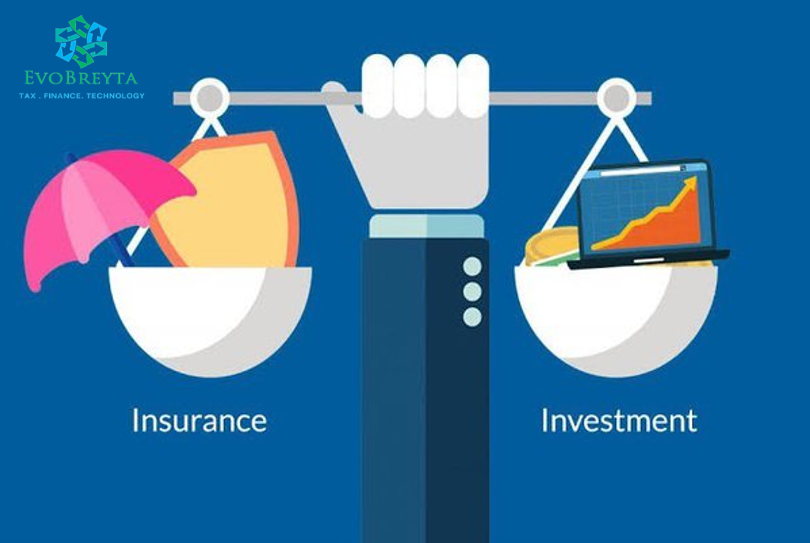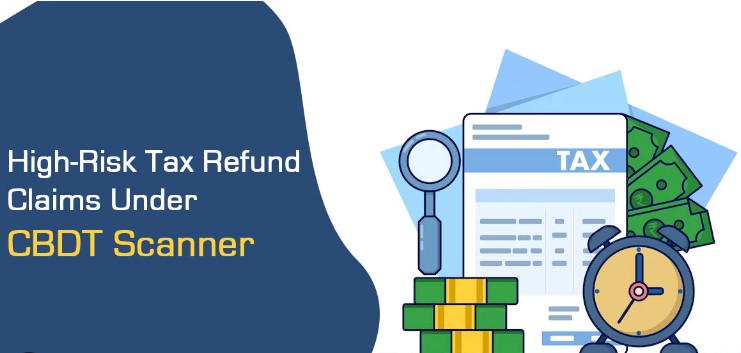
Well thought-out Move from EEE Regime to EET Regime - Taxation of Receipts under Life Insurance Policies and ULIPs
Published In : Taxmann Download
Author : Navneet Singal
A well-thought-out Move from EEE Regime to EET Regime
Taxation of Receipts under Life Insurance Policies and ULIPs
I. Introduction
“Taxation should not be painful process for the people. There should be leniency and caution while deciding the tax structure. Ideally, governments should collect taxes like a honeybee, which sucks just the right amount of honey from the flower so that both can survive. Taxes should be collected in small and not in large proportions.”
The classic Arthashastra quotation indicates the reasoning behind the movement of lawmakers from the EEE (Exemption, Exemption, and Exemption) to the EET (Exemption, Exemption, and Taxable) regime, i.e., taxation at the three stages of any investment, at the time of investment, accrual, and withdrawal. In the case of high-net-worth individuals (HNIs), the new movement to tax the withdrawal of money from social and retiral plans appears to be appropriate amid the high amount of investment in such plans by HNIs. It is a step in the right direction that the Central Government has recently imposed a tax on receipts from life insurance schemes if the total premiums paid by the individual in such schemes exceed Rs. 5 lakhs in a year.
During the last decade, one by one, the lawmakers have made all the investment schemes taxable, whether at the time of investment, accrual, or withdrawal from investment schemes, in respect of high amount of investment cases. These schemes include National Pension Schemes (NPS), Employee Provident Schemes (EPF), Unit-Linked Insurance Plans (ULIPs), etc.
The author of this post has made an effort to explain the Finance Ministry's most recent initiative to tax life insurance schemes above a certain contribution threshold. He has attempted to describe the different scenarios of receipts from such schemes, the nature and calculation of taxable income, TDS thereon, etc.
II. Life Insurance Policies (LIPs) including ULIPs – Deduction and Exemption
(i) Exemption of receipts u/s 10(10D) of the Act
Section 10(10D) of the Income-tax Act, 1961 (the Act), provides exemption from tax on any sum received under a life insurance policy (LIP), including the sum allocated by way of bonus on such policy. However, no exemption is available on any sum received under:
(a) A keyman insurance policy
(b) In case the dependent with disability or handicapped dependent, predeceases the individual or member of HUF (amount received u/s 80DD(3) or u/s 80DDA(3), respectively)
(c) Premium payable in a year is more than the % as mentioned below of the capital sum insured:
- 20%, if policy issued between 01-04-2003 to 31-03-2012
- 10%, if policy issued on or after 01-04-2012
- 15%, if policy issued on or after 01-40-2013 for insurance on the life of a person who is suffering with disability or from a specified disease as defined u/s 80U and u/s 80DDB, respectively
(d) Unit-Linked Insurance Policy/Policies (ULIP), in case,
- it has been issued on or after 01-02-2021[1], and
- the aggregate amount of premium payable on such policy/policies for any of the previous year during the term of such policy exceeds Rs. 2,50,000/-
(e) any other life insurance policy (LIP), in case,
- it has been issued on or after 01-04-2023[2], and
- the aggregate amount of premium payable on such policy/policies for any of the previous year during the term of such policy exceeds Rs. 5,00,000/-
However, in case, the sum is received on the death of a person under clause (c) to (e) no tax will be chargeable on such receipt. Further, in respect of Term Insurance Policy, no tax is chargeable on any receipt.
(ii) Deduction u/s 80C of the Act
A taxpayer, being an individual or a Hindu Undivided Family (HUF), can claim deduction under section 80C in respect of premium on LIPs/ULIPs paid by him/it during the year. Some important points in respect of this are as under:
(a) Policyholder: (I) In case of an individual - Taxpayer or his/her spouse or his/her children. (II) In case of a HUF - Any of the members of the HUF.
(b) Threshold limit (along with deduction u/s 80CCC & 80CCD) - Up to Rs. 1,50,000/-. It is further restricted to (I) 20% of the sum insured, if policy has been issued between 01-04-2003 to 31-03-2012, (II) 10%, if policy has been issued on or after 01-04-2012, and (III) 15%, if policy has been issued on or after 01-4-2013 for insurance on the life of a person who is suffering with disability or from a specified disease as defined u/s 80U and u/s 80DDB, respectively.
(c) Holding Period: (I) ULIP of UTI or LIC – 5 Yrs. (II) Any other LIP – 2 Yrs.
If any of the aforesaid investments, subscriptions, etc., is terminated, sold, etc., before the minimum holding period specified above, then the deduction allowed in earlier years would be deemed as income of the previous year of termination, sale, etc.
III. Computation of Taxable Income on maturity or surrender of LIPs or ULIPs
It is to be noted that receipts from any ULIP (issued before 01-02-2021) or any other LIP (issued before 01-04-2023) are fully exempt from tax, subject to some specific circumstances as described in the previous paragraphs; hence, no computation mechanism should be applied to them for any taxability purpose.
(i) Taxability on surrender or maturity of Life Insurance Policies (other than ULIPs)
Consideration received from only those LIPs is taxable which are issued on or after 01.04.2023 (mentioned as “eligible policies”, hereinafter). Any such income will be considered as income under the head of “Income from other sources”. For this purpose, a specific clause, i.e., 56(2)(xiii), has been inserted w.e.f. 01.04.2023[3]. Further, sub-clause (xviid) has also been inserted u/s 2(24) to include any sum referred to section 56(2)(xiii) in the definition of income[4].
The central government has issued computation mechanism[5] and guidelines[6] for the purpose of computation of income from consideration received from eligible policies. The computation of income of consideration received from eligible policies can be analyzed as below in light of new rules, guidelines, and amendments made by the lawmakers.;
(a) In case no exemption has been claimed u/s 10(10D) earlier in respect of eligible policies
If the aggregate amount of premium payable exceeds Rs.5,00,000 for any of the previous years during the term of eligible policies in respect of which consideration has been received, the sum received from such policy or policies is fully taxable due to which the such premium amount has got exceeded from Rs.5,00,000/- at the option of the taxpayer,
E.g., if a taxpayer has taken 4 eligible policies (i.e., policy A, B, C, & D), 3 policies of Rs. 1.25 lakh each (i.e., policy A, B, & C) and 1 policy of Rs.1.5 lakh (i.e., policy D) annual premium and he has received consideration in respect of all these policies during the current previous year, i.e., e.g., FY 2028-29, the consideration received from 2 policies of Rs.1.25 lakh each (any two) and Policy ‘D’ of Rs.1.5 lakh can be considered as fully exempt and only proceeds from 1 policy of Rs.1.25 lakh will be taxable. The total amount of exemption claimed will be Rs.4 lakhs (Rs.1.25 lakh each - policy A & B + Rs. 1.5 lakhs – Policy D).
It can be seen, in this example, that the taxpayer can opt for Policy A, B, and C (total premium is Rs. 3.75 lakhs) and can also opt for A, B, and D (total premium is Rs. 4 lakhs) but as opting Policy A, B, and D will be more beneficial to him, he would like to opt for it subject to other conditions.
Computation of Taxable Income
The income from other sources u/s 56(2)(xiii) arising from receipt of such amount during the previous year in which such amount is received shall be calculated in accordance with the following formula:
= Consideration received - Premium paid (no deduction should have been
claimed in respect of such premium u/s 80C)
(b) In case the exemption has been claimed u/s 10(10D) earlier, i.e., before the current previous year in respect of the eligible policies (mentioned as “old eligible policies” hereinafter)
If the aggregate amount of premium payable on eligible policies on which consideration has been received during the current previous year and the old eligible policies, exceeds Rs.5,00,000 for any of the previous years during the term of such policies, the consideration received from such eligible policies is fully taxable due to which the such premium amount has got exceeded from Rs.5,00,000, at the option of the taxpayer,
E.g., if we continue with the previous example and the taxpayer also receives consideration in respect of eligible policies X (annual premium is Rs. 1 lakh) & Y (annual premium is Rs. 1.5 lakh) during the FY 2029-30, he will be eligible to claim exemption for policy X and consideration received in respect of Policy Y will be taxable. The aggregate amount of annual premium of old eligible policies claimed earlier (Rs.4 lakhs) and policy X is Rs. 5 lakhs which is within the threshold limit of Rs.5 lakhs.
Computation of Taxable Income
The income from other sources u/s 56(2)(xiii) arising from receipt of such amount during the previous year in which such amount is received shall be calculated in accordance with the following formula:
= Consideration received - Premium paid (no deduction should have been claimed
in respect of such premium either u/s 80C or while
computing income u/s 56(2)(xiii))
(ii) Taxability on surrender or maturity of Unit Link Insurance Policy/Policies (ULIPs)
Consideration received from only those ULIPs is taxable which are issued on or after 01.02.2021 (mentioned as “eligible ULIPs”, hereinafter). Any such income will be considered as income under the head of “Income from capital gain”. For this purpose, specific clause, i.e., 45(1B), has been inserted w.e.f. 01.04.2021[7]. Further, sub-clause (c) has also been inserted u/s 2(24) to include ULIPs in the definition of capital asset.[8]
The central government has issued computation mechanism[9] and guidelines[10] for the purpose of computation of income of consideration received from eligible ULIPs. The computation of Income of consideration received from eligible ULIPs can be analyzed as below in the light of new rules, guidelines and amendments made by the lawmakers;
(a) In case, no exemption has been claimed earlier in respect of eligible ULIPs
If the aggregate amount of premium payable exceeds Rs.2,50,000 for any of the previous years during the term of eligible ULIPs in respect of which consideration has been received, the sum received from such policy or policies will be taxable due to which the such premium amount has got exceeded from Rs.2,50,000/- at the option of the taxpayer,
E.g., if a taxpayer has taken 4 eligible policies (i.e., policy A, B, C & D), 3 policies of Rs. 65,000 each (i.e., policy A, B & C) and 1 policy of Rs.75,000 (i.e., policy D) annual premium and he has received consideration in respect of all these policies during the current previous year, i.e., FY 2028-29, the consideration received from 2 policies of Rs.65,000 each (any two) and Policy ‘D’ of Rs.75,000 can be considered as fully exempt and only proceeds from 1 policy of Rs.65,000 will be taxable. The total amount of exemption claimed will be Rs.2.05 lakhs (Rs.65,000 each - policy A & B + Rs. 75,000 – Policy D).
It can be seen, in this example, that the taxpayer can opt for Policy A, B, and C (total premium is Rs. 1.95 lakhs) and can also opt for A, B, and D (total premium is Rs. 2.05 lakhs) but as opting Policy A, B, and D will be more beneficial to him, he would like to opt for it subject to other conditions.
Computation of Taxable Income
The capital gains arising from receipt of such amount during the previous year in which such amount is received shall be calculated in accordance with the following formula:
= Consideration received - Premium paid (no deduction should have been
claimed in respect of such premium u/s 80C)
(b) In case the exemption has been claimed earlier, i.e., before the current previous year in respect of the eligible ULIPs (mentioned as “old ULIPs” hereinafter)
If the aggregate amount of premium payable on eligible ULIPs on which consideration has been received during the current previous year and the old eligible policies, exceeds Rs.2,50,000 for any of the previous years during the term of such policies, the consideration received from such eligible ULIPs is fully taxable due to which the such premium amount has got exceeded from Rs.2,50,000, at the option of the taxpayer,
E.g., if we continue with the previous example and the taxpayer also receives consideration in respect of eligible policies X (annual premium is Rs.40,000) & Y (annual premium is Rs.75,000) during the FY 2029-30, he will be eligible to claim exemption for policy X and consideration received in respect of Policy Y will be taxable. The aggregate amount of annual premium of old eligible policies (Rs.2.45 lakhs) and policy X is Rs.2.45 lakhs which is within the threshold limit of Rs.2.5 lakhs.
Computation of Taxable Income
The capital gains arising from receipt of such amount during the previous year in which such amount is received shall be calculated in accordance with the following formula:
= Consideration received - Premium paid (no deduction should have been claimed
in respect of such premium either u/s 80C or while
computing income u/s 45(1B))
(iii) ULIPs and other LIPs are mutually exclusive, and while considering the threshold limit of Rs.2,50,000 or Rs.5,00,000 of annual payable premium, respectively, the threshold limit will be considered separately.
(iv) GST will not be considered as part of annual premium payable while considering the threshold limit
Point no. 5 of the guidelines[11] issued in respect of LIPs (other than ULIPs) clarifies that GST will not be included in the amount of the annual premium while considering the threshold limit of Rs.5,00,000/- in respect of the eligible policies. However, no such clarification has been provided with respect to the eligible ULIPs. In such circumstances, as per the understanding of the author, point no. 5 of the guidelines is clarificatory in nature, and the same should also apply to the eligible ULIPs while considering the threshold limit of the annual premium of Rs.2,50,000/- in respect of ULIPs.
(v) Taxability of receipts from Term Life Insurance policies
Point No. 6 of the guidelines issued in respect of LIPs further clarifies that any sum paid under a term insurance policy shall continue to be exempt u/s 10(10D) of the Act, irrespective of the amount of the premium payable with respect to such policy. The amount paid under the term policy is paid to the nominee only at the death of the insured person, which is already exempt u/s 10(10D).
Further, the premium paid for such policies shall not be counted for checking the threshold limit of Rs 5,00,000.
IV. TDS applicability on payments on surrender or maturity value
Section 194DA of the Act, provides that any person responsible for paying to a resident any sum under a life insurance policy (including bonus) shall deduct income-tax thereon.
However, in case, the exemption u/s 10(10D) is available to the recipient, no tax is required to be deducted. We have discussed all scenarios, where exemption is not available u/s 10(10D) in the clause(i) of the II paragraph of this article.
The TDS is required to be deducted at the following rates:
(i) 2% of payment (applicable during the period from 01.10.2014 to 31.05.2016)
(ii) 1% of payment (applicable during the period from 01.06.2016 to 31.08.2019)
(iii) 5% of the amount of income comprised in payment (applicable w.e.f. 01.09.2019)
Some important points to deliberate:
(i) W.e.f. 01.09.2019, TDS is required to be deducted only on the income comprised in the payment @5%, while earlier TDS was required to be deducted on whole payment. Now, the payers are required to calculate the income on such payment.
(ii) TDS is deductible at the time of payment.
(iii) No TDS is required to be deducted in case the amount payable during the FY is less than Rs.1,00,000/-.
(iv) The Lower TDS Certificate (‘LTDC’) provision of section 197 is not applicable. However, self-declaration Form No.15G/15H can be submitted u/s 197A (w.e.f. 01.06.2015)
V. Conclusion
In every Union Budget, the central government is attempting to make tax-free or low-tax investment avenues unattractive for rich or high-net-worth individuals. The recent removal of exemptions from life insurance schemes and ULIPs by the Finance Act, 2023, and Finance Act, 2021, respectively, one of the endeavors in this direction.
While, amending the provision of Income-tax, the Finance Ministry has explained its observation in Memorandum to Finance Act, 2023[12], that,
“It may be pertinent to note that the legislative intent of providing exemption under clause (10D) of section 10 of the Act has been to further the welfare objective by subsidising the risk premium for an individual’s life and providing benefit to small and genuine cases of life insurance coverage. However, over the years it has been observed that several high net-worth individuals are misusing the exemption provided under clause (10D) of section 10 of the Act by investing in policies having large premium contributions (as it is acting as an investment policy) and claiming exemption on the sum received under such life insurance policies.”
The explanation to memorandum explicitly shows the intent of the government behind such amendments. In the same direction, investments in NPS, EPF, and other retiral schemes have also been taxed either at the time of investment, accrual, or withdrawal, where a high amount of investment has been involved during the last few years.
The author perceives these attempts in the right directions where the government is trying to remove exemption from such investment income that is not actually for any welfare, genuine life insurance coverage, or security at the time of retiral.
Famous American judge and judicial reformer, had quoted that,
"Taxes are the lifeblood of government and no taxpayer should be permitted to escape the payment of his just share of the burden of contributing thereto."
[1] Introduced by Finance Act, 2021 – amendment in section 10(10D) by inserting 4th to 7th proviso
[2] Introduced by Finance Act, 2023 – amendment in section 10(10D)
[3] Insertion of new clause (xiii) in sub-section (2) of section 56 vide Finance Act, 2023
[4] Insertion of new clause (xviid) in sub-section (24) of section 2 vide Finance Act, 2023
[5] Insertion of Rule 11UACA vide Notification No. 61/2023-Income Tax | Dated: 16-08-2023
[6] Circular No. 15/2023, F. NO.370142/28/2023-TPL, Dated: 16.08.2023
[7] Insertion of new clause (1B) in section 45 vide Finance Act, 2021
[8] Insertion of new clause (c) in sub-section (24) of section 2 vide Finance Act, 2023
[9] Insertion of Rule 8AD vide Income-tax (second amendment) Rules, 2022, w.e.f. 18-1-2022
[10] Circular No. 02/2022, F. No.370142/61/2021-TPL, Dated: 19.01.2022
[11] Circular No. 15/2023, F. NO.370142/28/2023-TPL, Dated: 16.08.2023
[12] Memorandum Explaining the Provisions in the Finance Bill, 2023





